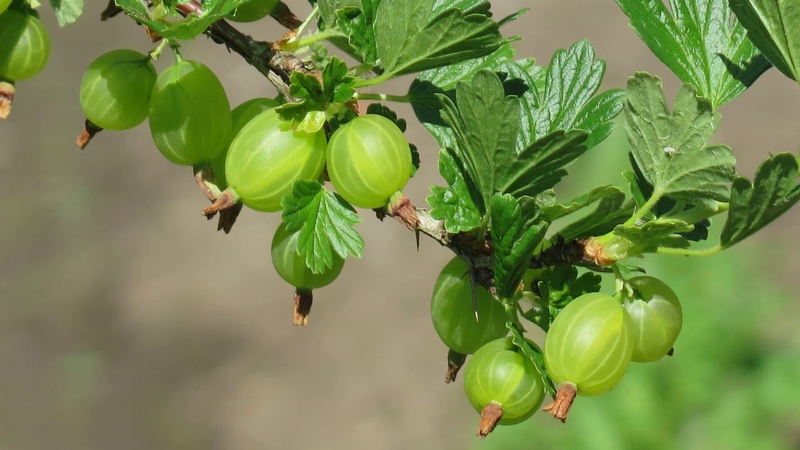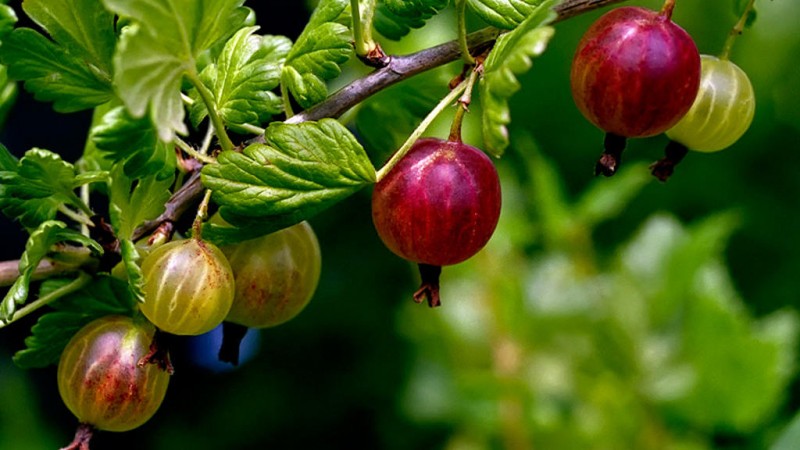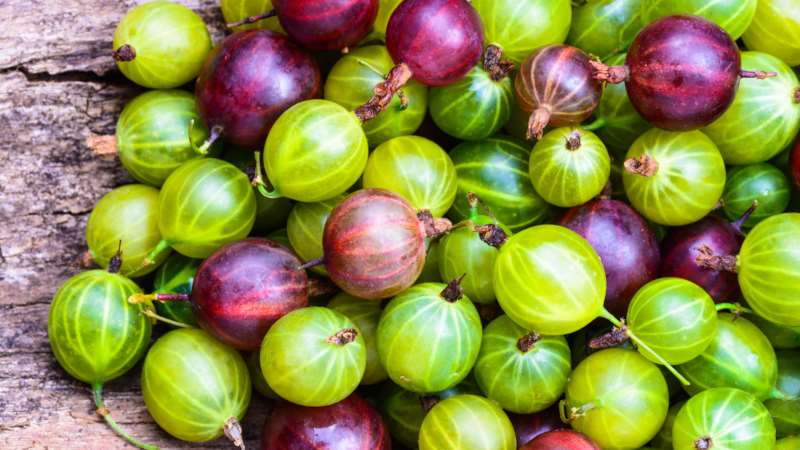Common gooseberry is a berry or fruit, what it looks like, where it grows and what is it called differently
A stunted shrub with thorny branches, heart-shaped leaves and sweet and sour, fragrant berries have been seen by many. The fruits are used in folk medicine, they are used to make jams, marshmallows, jelly, and emerald jam. On the basis of a natural species, more than 1000 varieties and hybrids of garden gooseberries were bred.
All about the gooseberry - the place of origin and growth, the distinctive characteristics of bushes, leaves and fruits - read in our article.
The content of the article
What is common gooseberry
Ordinary gooseberry, rejected or European - a plant from the Gooseberry family (Grossulariaceae), the genus Currant (Ribes). Until the middle of the twentieth century, gooseberries belonged to a separate species - Gooseberries, it was not compared with the genus Currant. However, the cross properties between these plants have been reduced to the concept of a single genus.

The homeland of the gooseberry is northern Africa and Western Europe.
Jean Ruel made the first description of the plant in the book De natura stirpium, which was published in 1536. The first botanical drawing was published in 1548 in the book Memorable Commentaries on the Description of Plants by Leonard Fuchs.
Is it a berry or fruit
In the current biological classification, gooseberry is a berry. Fruits with a thin skin, after ripening, dry out on the bushes, if they are not harvested in time, and fall off. The numerous seeds contained in the pulp germinate in the soil. Seed propagation is inherent only in berries.
Other names
The ancient Latin name Grossularia was derived from the French groseille, which means "currant". The plant received its international classical name in 1753 thanks to Karl Linnaeus. Since then, in the scientific literature, gooseberries have been called Ribes uva-crispa - "currant grapes".
Gardeners also know other names of Latin origin - Grossularia vulgaris, Grossularia reclinata, Ribes hybridum Besser, Grossularia pubescens Opiz, Ribes grossularia.
In another way, gooseberries are called goose and wine berries, hergechnik, bersen, agrus, veprina, oprini.
In Altai, the berries were known as bersen, in the upper part of the Yenisei River - kryg or kryzh-bersen.
Interesting! According to historians, the Bersenevskaya embankment in Moscow was named after the palace garden, where grown gooseberries.
In the botanical books of the late 19th - early 20th centuries, the name "kryzh" is mentioned.
In Azerbaijan, gooseberries are called "rus alchasy" - literally "Russian cherry plum".
Gooseberry, or goose berry - that's what the English call it. Previously, berries were used to make a sauce for fried poultry with a savory sweet and sour note.
The gooseberry got its European name "wine berry" due to the fact that wine was made from it. Not only berries were put into barrels, but also leaves. The sweet and sour drink and fresh berries were appreciated by King Henry VIII. It is believed that the best varieties were bred by the British.
Botanical description
What does a gooseberry look like? Like any plant, it has a unique set of characteristics.
Bush
Shrub height does not exceed 1.2 m... The color of the bark, prone to flaking, is dark gray or dark brown. Simple or tripartite thorns are formed on the branches. New shoots have a cylindrical shape, covered with a grayish bark. They have thin needle-like spines and small black dots.
Brown buds are covered with reddish scales with a white edge along the edge. The buds originate in the axils of the thorns.

Leaves
The leaf blade is three- and five-lobed, serrated at the edges, covered with whitish hairs. The color is green, muted.The shape of the leaves is ovoid or round, with a heart-shaped outline. Length - 5-6 cm. At the base there are sharp thorns that frighten off wild animals.
Flowers
How do gooseberries bloom? The flowering period of 18 days begins in May. Gooseberry flowers are bisexual, that is, they have both pistils and stamens. The flowers are white with green or red blotches. Flowers are single or collected in a brush of 2-3 pcs., Are located in the leaf axils. The sepals are pubescent.
Flowering bushes attract bees and are considered one of the best honey plants.
Reference. As a result of crossing the spread-out and common gooseberries with currants, scientists managed to breed a yoshta hybrid. The unusual name is the result of a combination of the initial letters of the German words johannisbeere (currant) and stachelbeere (gooseberry).
Fruit

The plant begins to bear fruit 2-3 years after landing... The berries ripen in July - August. The fruits are oval, almost spherical, with a tail at the end. Length - 12-30 mm. The skin is smooth or roughly bristled, with veins. Coloring green, yellow, purple, black, red, white.
The section shows a juicy, translucent, watery pulp and many brown seeds.
The skin has a sour taste, and the flesh is sweet, with grape, plum, raspberry or peach flavors depending on the variety.
Distribution area
Where do gooseberries grow? In the wild, the plant is widespread in the Caucasus, North America, Central Asia, Ukraine, Europe, North Africa.
On the territory of Russia, the culture is bred in the gardens of the middle lane. Bones are carried by birds, and wild bushes are found in the forests of Bryansk, Tver, Saratov, Kostroma, Oryol, Moscow, Vladimir, Voronezh, Kaluga, Tula, Samara, Ulyanovsk regions.
Wild gooseberries grow on rocky mountain slopes among other shrubs, in swampy forests, on wastelands and abandoned agricultural lands.
The culture is grown as a fruit and berry plant on light, medium loamy, fertile soils. Ribes uva-crispa loves moisture, but develops poorly in areas with close groundwater.

Conclusion
Common gooseberry bushes grow in the wild and are cultivated in gardens as ornamental and fruit and berry plants. The first description of the gooseberry appeared in 1536, and the first official name Ribes uva-crispa - in 1753. Gardeners call it differently: goose, wine berry, hergechnik, bersen, agrus, veprina, oprini.
The first crop is harvested 2-3 years after planting. The flowering period is 18 days, and berries ripen in July - August. The fruits have a pleasant sweet and sour taste.